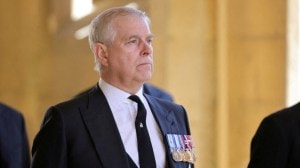How far can US push Musharraf?
Inside Washington, the frustration of doing business with Pakistan’s President, General Pervez Musharraf, is matched only by the fear of living life without him.

Inside Washington, the frustration of doing business with Pakistan’s President, General Pervez Musharraf, is matched only by the fear of living life without him. For years, the notion that Musharraf is all that stands between Washington and a group of nuclear-armed mullahs has dictated just how far the White House feels it can push him to root out al-Qaeda and Taliban operatives who enjoy safe existence in Pakistan.
The specter of Islamic radicals overthrowing Musharraf has also limited the Bush administration’s policy options, taking off any ideas about US strikes against a resurgent al-Qaeda, which has camps in Pakistani tribal areas.
But just how fragile is Musharraf’s hold on power? And might the US have more leverage than it believes? The question of how to handle Musharraf is critical at a time when intelligence officials agree that the Taliban is expanding its reach in Pakistan.
The fear within Washington that Islamic extremism has become a dominant force in Pakistan has been stoked in part by Musharraf himself. Some analysts say his warnings are used to maintain a steady flow of US aid and keep at bay demands from Washington for democratic reforms.
While the Islamists would take power in any way possible, an examination of polling data provides little evidence that Islamists have enough support to take over the country. If anything, they would likely control only select areas.
For decades, the military has been the most dominant institution in Pakistan. If Musharraf were to fall to an assassin’s bullet, US diplomatic and intelligence officials say, it is unlikely that there would be mass uprisings in Lahore and Karachi, or that a religious leader in the Taliban mold would rise to power.
“I am not particularly worried about an extremist government coming to power and getting hold of nuclear weapons,” said Robert Richer, who was associate director of operations in 2004 and 2005 for the CIA. “If something happened to Musharraf tomorrow, another general would step in.”
Based on the succession plan, the vice chief of the army, General Ahsan Saleem Hyat, would take over as the leader of the army and Mohammedmian Soomro, a former banker, would become president. Hyat, who is secular like Musharraf, would hold the real power. But it is unclear whether Hyat would be able to keep various groups within the military in line.
US officials say that Pakistan’s ISI continues to play a direct role in arming and financing the Taliban’s re-emergence in western Pakistan.
The money and military hardware from the US is crucial for Pakistan’s armed forces to keep pace with India. Because of this dependency, some officials argue, the Bush administration has powerful leverage to force Musharraf to crack down on extremism.
On the other side of the debate, some State Department officials say that while Islamic militants probably would not topple Musharraf, why roll the dice? Musharraf might be frustrating to work with, they say, but he has the virtue of being a known quantity. And with Iraq spiraling out of control and an emboldened Iran flexing its muscle throughout the region, aren’t things complicated enough without taking a chance on a nuclear-armed Muslim nation of 165 million people?



- 01
- 02
- 03
- 04
- 05




























